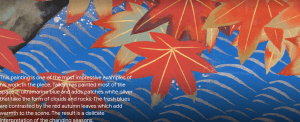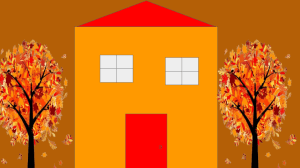My first reaction to this photo is that it is very simple and basic which i like because its nothing to overboard like to abstract. If i was able to tell the artist a question it would be what inspired him to paint the photo. I think the artist created this work because he wanted to show the world that he was able to paint and i think he wanted to show off his impressive art work to everyone around the world

Autumn learning journey
This photo was taken in Hawaii and we can see that there is a very long bridge towering over the calm dark blue sea. We can also see in the background that there are lots of tall buildings which might mean there is a town located where all of the buildings are. it is also looking like a hot day because there are barely any clouds in the sky and because it is a bright day. there are also little rocks right next to where the photo has been taken and the little bushes.

response to text
- What is the name of the native New Zealand bird known for its vibrant blue feathers, long red bill, and distinctive white undertail?
- A) Tui
- B) Kea
- C) Pukeko
- D) Ruru
- Which native New Zealand bird is renowned for its melodious song and iridescent plumage?
- A) Weka
- B) Piwakawaka
- C) Tui
- D) Ruru
Inference Questions:
- Why are Wekas vulnerable to population declines in some areas, according to the article?
- A) Due to their flightless nature
- B) Because of their fearless behavior
- C) Predation by introduced species
- D) Lack of suitable habitat
- Why are Keas described as cheeky birds in the article?
- A) Because they have bright orange underwings
- B) Due to their olive-green plumage
- C) Because they often investigate objects and vehicles
- D) Because they inhabit alpine regions
- Based on the article, what role do Rurus play in the ecosystem?
- A) Controlling nocturnal pests
- B) Mimicking sounds from their environment
- C) Investigating backpacks and tents
- D) Foraging for insects on the wing

